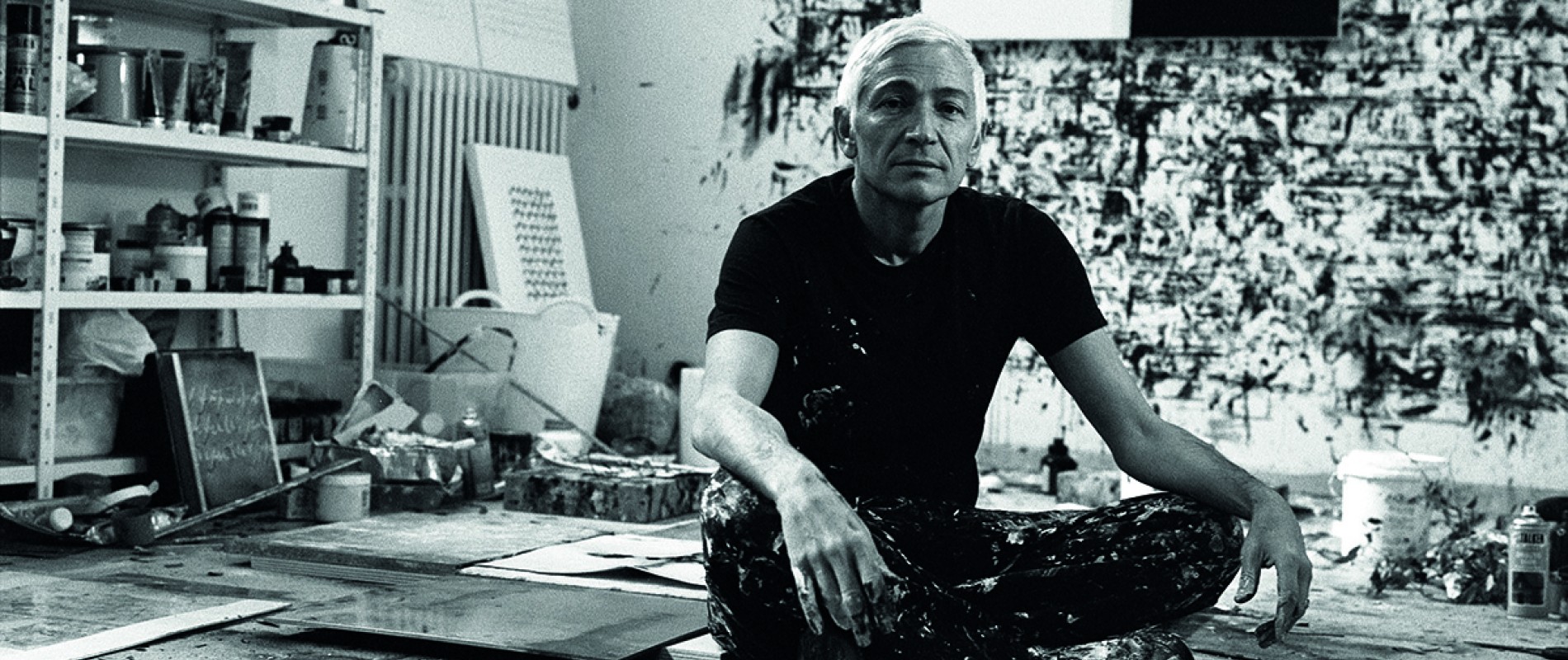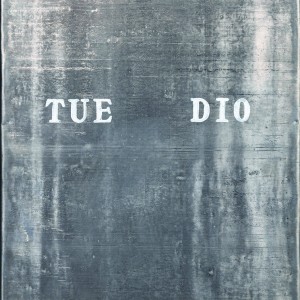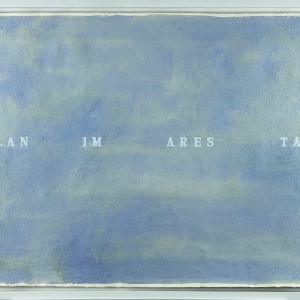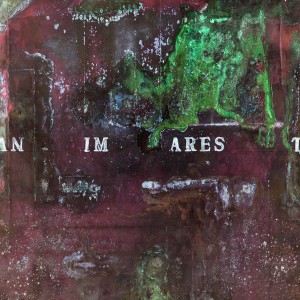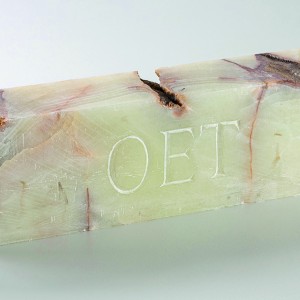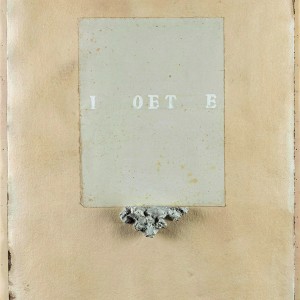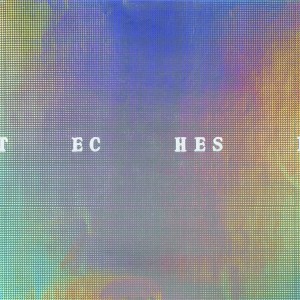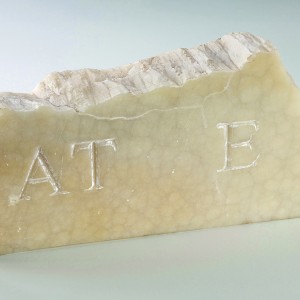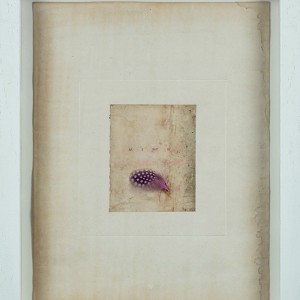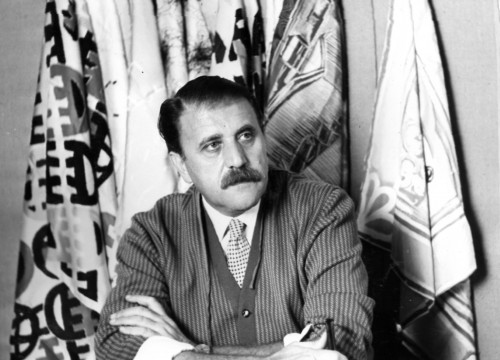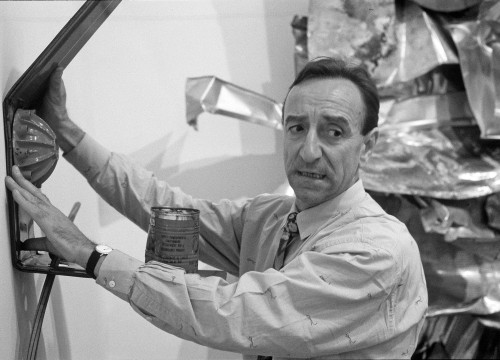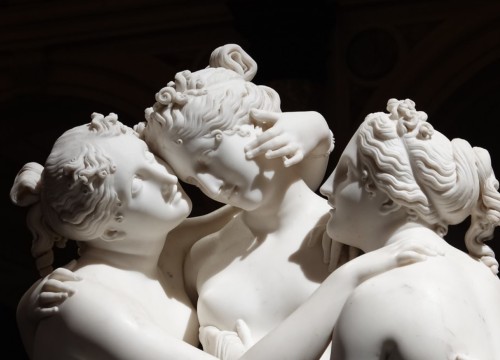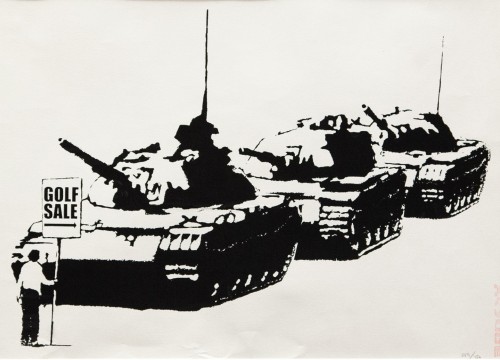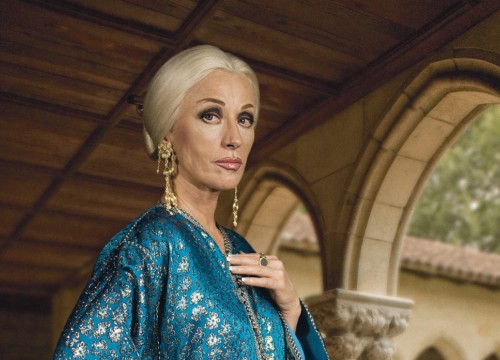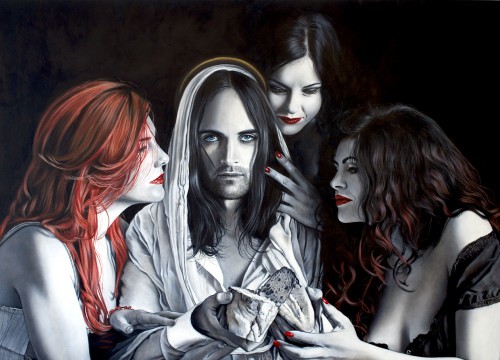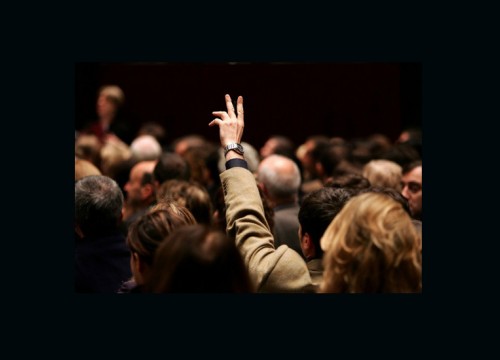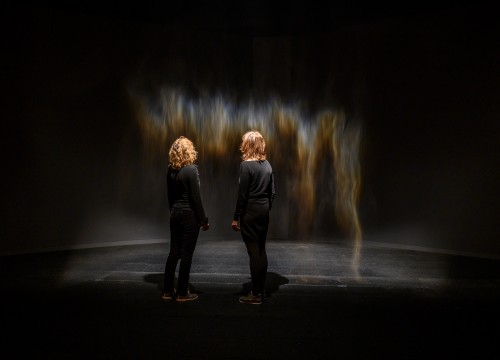Alfredo Rapetti Mogol, also known as Cheope, paints words. Fascinated by ancient alphabets, he is a songwriter who wrote the lyrics of internationally acclaimed songs, but he is also a relevant visual artist. Below, you will find his landmarks, his artistic legacy and his future plans.
Lyricist, author, painter. Facets of a creative expression alternating or integrating with themselves.
They alternate integrating with each other, helping one another, mutually giving breath to each other, lightening themselves in sharing responsibility. The word, in music, moves, it’s a sonic vibration, in painting it changes to a sign, a silence waiting for a voice and two eyes that can give it life.
The first time you got success as a songwriter was in 1993 with Raf’s Battito Animale. It was the start of your career in the figurative field.
The discovery of the sign in painting, of the painted word. For the first time I felt represented, and I rediscovered my roots. Writing as emotional radiography of the human being electrocardiogram of our lives.
The collaboration with Michelangelo Pistoletto.
I had the honor to exhibit, to collaborate and to become friend with an art titan such as Michelangelo Pistoletto, and his curator Fortunato d’Amico. We are working on a large collective installation.
Your passion for archeology reflects on the choice of your stage name, Cheope, but also on the figurative studies on the alphabet.
I’ve always been fascinated by archeology and ancient alphabets. They are symbols to which we give voice, producing a sound that creates a language for communicating even the slightest emotions. In my eyes, it is always a little magnificent miracle.
FOR HIM, THE WORD MUSIC IT'S A SONIC VIBRATION,
IN PAINTING IT'S A SIGN OF WAITING FOR A VOICE
You participated twice in the Biennale in Venice. What did you feel during those experiences?
Gratitude, enthusiasm and responsibility. The Biennale is an attestation, a quality certificate which is valid all over the world. Something that remains. I sincerely thank Duccio Trombadori and Vittorio Sgarbi for inviting me.
If you should explain your paintings to a blind person and your lyrics to a deaf person, what would you say?
I’ll tell the blind man to imagine the words as a line of people in different positions, and I’ll paint my lyrics to a deaf man, which is, in part, what I’m already doing.
In the world of visual art, the artist that excite you the most.
My polar stars have been and remain Lucio Fontana, Alberto Burri, Antoni Tàpies, Jean Degottex, Maria Lai, Anselm Kiefer, Robert Ryman. Among the contemporaries I really like Lawrence Carrol, Sofie Ko, Serena Giorgi, Claudio Parmiggiani.
How are you experiencing the limitations imposed by the pandemic and how are they affecting your work?
During the first part of the pandemic, I experienced a moment of complete immobility, then I absorbed the impact and I tried to work more carefully and with more attention than in the past. The artist it’s almost like a monk and he is accustomed to and inhabited by silence and loneliness. I suffer limitations when I think about my sons and all the youngest people who are deprived of spaces of freed such as music.
FOND OF ARCHEOLOGY, HE COLLABORATES WITH PISTOLETTO
AND EXHIBITED TWICE AT THE VENICE BIENNALE
From your Grandfather Mariano, also known as Calibi, musical editor and songwriter, up tp your father, Giulio Rapetti Mogol, who is considered The control of the compositional harmony led you to important results. An all-round sensibility that pushes the greatest lyricist of all time, to your maternal grandfather and your mother, you grew up surrounded by artistic inspiration. A legacy that can stimulate but which can also be intimidating.
It surely is a burdensome legacy and it’s just because of both the fact that I’m reckless and the awareness that I could only do what I’m doing that I was confronted with the story of my family. I reached unthinkable goals, I am thankful to life and to the public, they both gave me things.
The control of the compositional harmony led you to important results. An all-round sensibility that pushes you to search for or to compete against a balance?
Beside the compositional balance, in a song or a painting, I always search for the authenticity, the expressive sincerity, the artistic representation of my life experience, that fragment of truth which is shared with everyone, the thrill that Raymond Carver called “acknowledgment shock”. In addition, I demand an artwork to have a language autonomy, a conceptual and emotional communication which is able to convey a message without additional or subsidiary information which are extraneous to the pure creative process.

